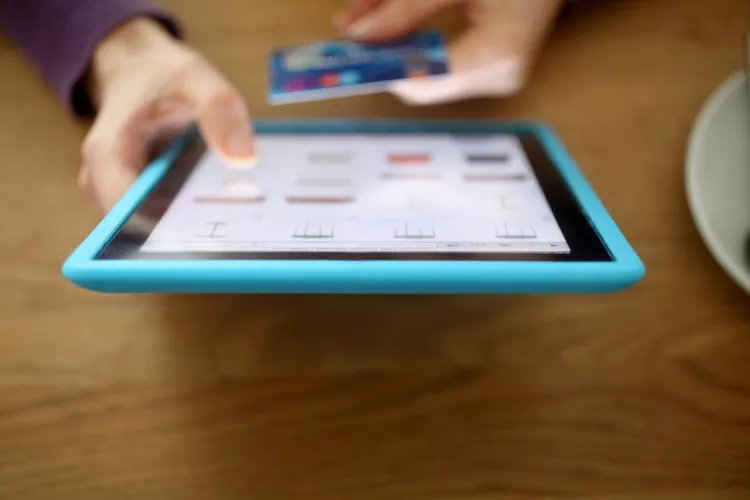Summary
Gift Cards, Coffee Machines, and Watches: A Poor Use of Points and Miles
Moreover, the best use of points and miles is for flying all around the globe. International trips that would otherwise cost thousands of dollars can be yours for the taking, provided that you’re able to plan strategically around redeeming your miles.
While points are generally advantageous for frequent travelers, they also represent a substantial profit source for airlines and credit card issuers. Consequently, these points become even more profitable when not utilized for flights. This is why airlines frequently permit customers to redeem hard-earned miles for merchandise. Notably, personal electronics, golf clubs, and kitchen appliances are just a few temptations that loyalty programs use to entice you to spend your miles.
However, is it really wise to allocate those points and miles for merchandise? Unless you find yourself with no other viable options, it’s advisable to reserve your points for future travel.
Why is most merchandise a bad exchange for points and miles?
As you accumulate points, you might begin receiving promotional emails from your airline, hotel chain, or credit card company that offer goods and services in exchange for points. More often than not, these redemptions represent a very poor value, frequently assessed at or below one cent per point.
For instance, the United Airlines MileagePlus Catalog currently lists a 256GB Apple iPhone 8 Plus for 126,600 miles, while the same unlocked phone retails for $949 directly from Apple.
Therefore, choosing to use your miles for an iPhone would equate to a redemption rate of merely 0.75 cents per mile. If you earn one MileagePlus mile per dollar spent on a United credit card, you would effectively receive less than a penny for each point—an awful exchange rate.
Alternatively, for 120,000 MileagePlus miles—just 6,600 less than the iPhone—you could book a round-trip United Polaris saver award flight between the United States and Europe. A flight from San Francisco International Airport to Frankfurt Airport in the premium cabin can cost over $7,000, depending on the season. Thus, using those MileagePlus miles for such a flight would provide a value of six cents per mile.
Still skeptical? Let’s consider another example: American Express Membership Rewards points. By linking your Amazon.com account with your American Express card, you can use Membership Rewards to purchase items; however, the rate you obtain is only 0.7 cents for each point. Thus, you would require 14,286 points to obtain $100 worth of goods on Amazon. In contrast, those same points can be redeemed through American Express Travel for flights and hotels at a value of one cent each. It’s clear to see why choosing merchandise over travel for your points is often a losing proposition.
When should I use points and miles for merchandise?
If your points are insufficient for a free trip before they expire, or if you have no plans to fly with a particular airline again, using those miles for merchandise at an acceptable rate may still be worthwhile. Ultimately, it’s about maximizing value.
One reasonable application of miles that doesn’t involve travel is in securing magazine or newspaper subscriptions. Through Mags for Miles, travelers can exchange leftover frequent flyer miles for print subscriptions. For example, utilizing United MileagePlus miles, a one-year subscription to Money Magazine costs 800 miles, valuing each point at approximately 1.5 cents. In comparison, a Bloomberg Businessweek subscription would cost around $70 or 1,600 MileagePlus award miles, equating to a value of 4.4 cents per mile.
A $264 United flight (before taxes and fees) could yield 1,320 MileagePlus award miles for those without status or a United credit card. Consequently, this would allow you to acquire at least one magazine subscription. Even if you don’t plan to take free flights, participating in a frequent flyer program can still deliver some rewards.
Are auctions a good use of points and miles?
Another scenario where using miles for something other than travel may be justifiable is through compelling experience auctions hosted by airlines or hotel chains. These auctions can sometimes offer excellent value, giving participants access to once-in-a-lifetime experiences.
Some brands even rent boxes at prominent venues worldwide. For example, Marriott holds significant presences at selected stadiums in cities like Chicago and New York, where you can redeem points for suite seats that often come with complimentary food and drinks.
Typically, auctions attract individuals with an excess of points. Frequent travelers, who log numerous miles for business purposes and wish to spend leisure time at home, often represent prime candidates for these experiences. As a result, these customers may drive up auction prices, and it is not uncommon to witness event tickets fetching hundreds of thousands of points or above.
In very select cases, it may be beneficial to use your points for merchandise or experiences, but these instances are indeed rare. Therefore, before you decide to trade points for a coffee maker, it’s wise to crunch the numbers to ensure that you are getting the value you desire. In almost all situations, using points and miles is the superior strategy for discounted travel.




